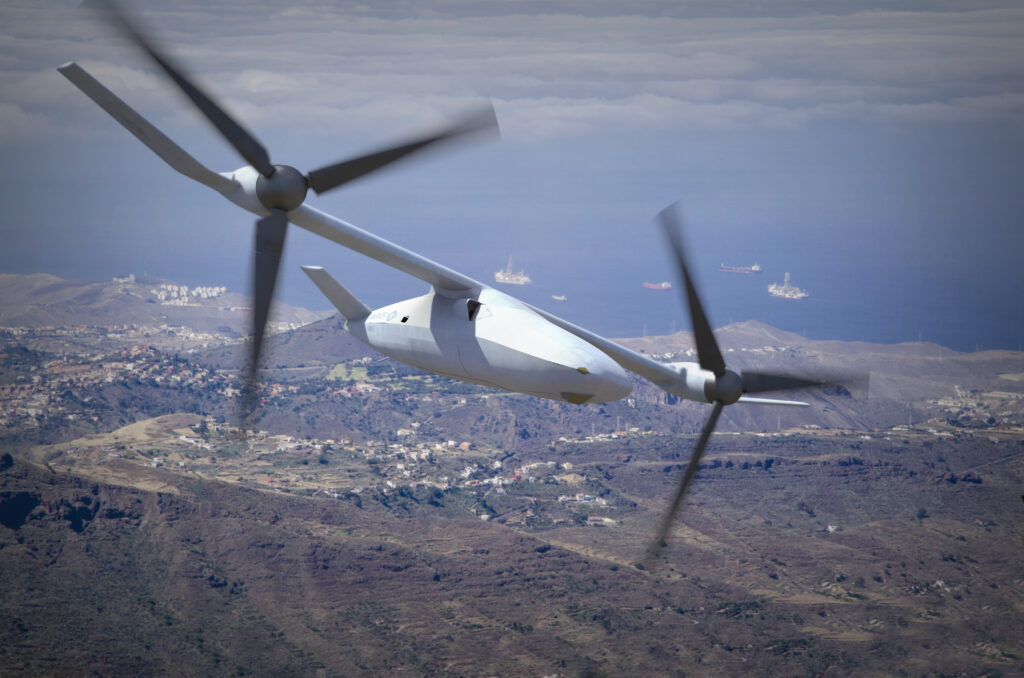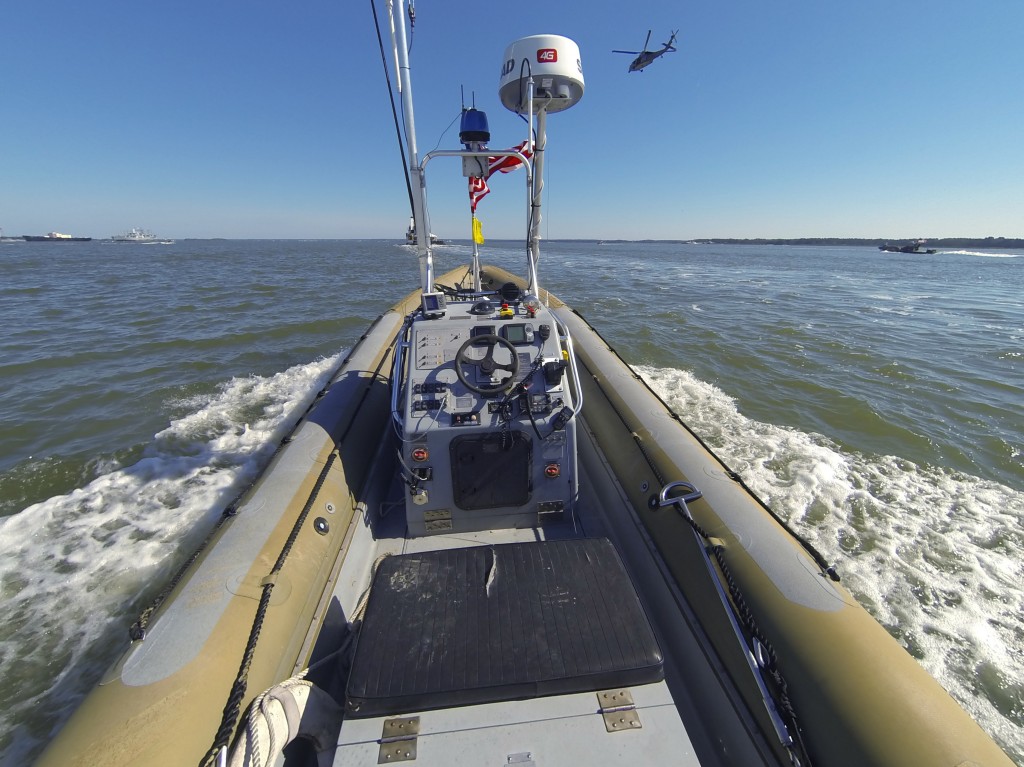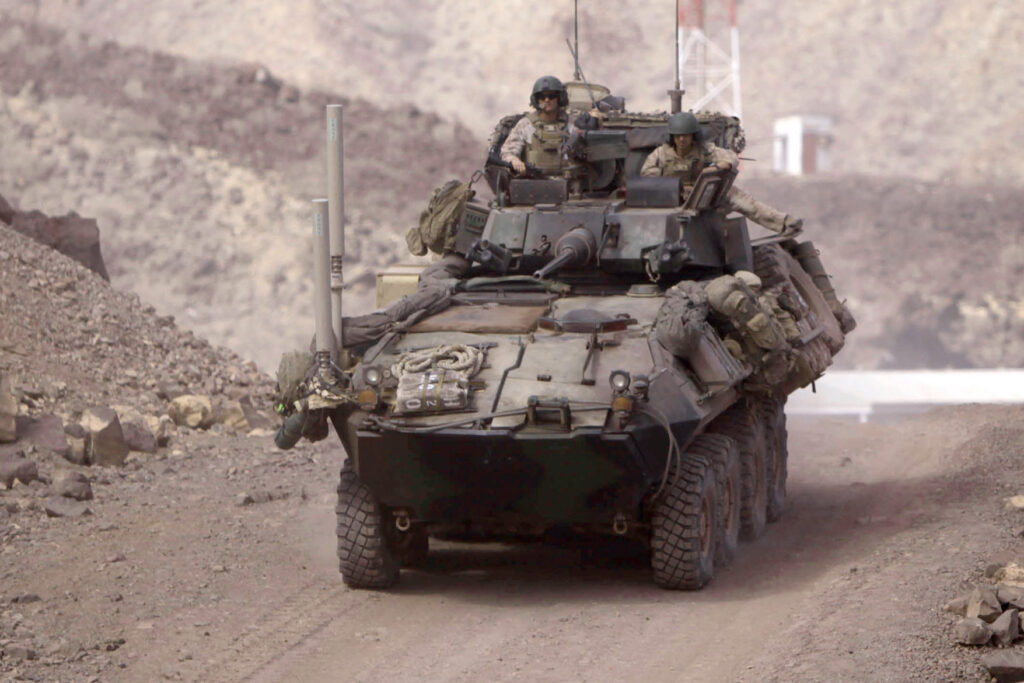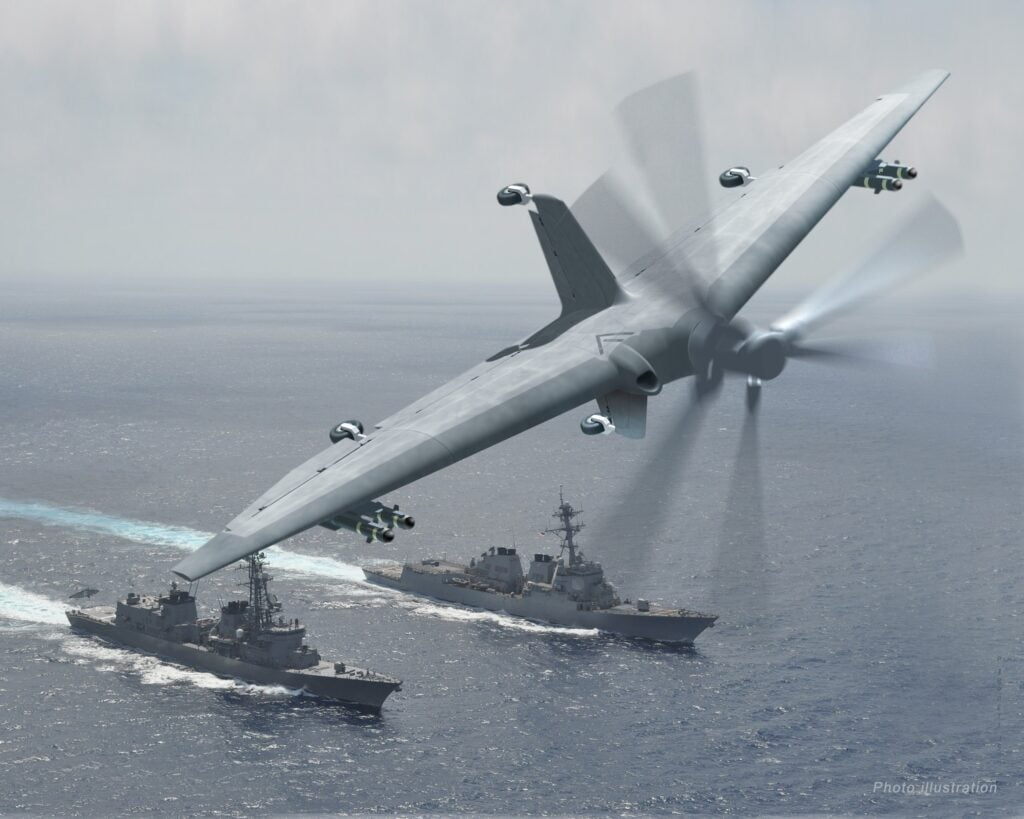By SYDNEY J. FREEDBERG JR.
 SAN DIEGO: Before the first human Marine hits the beach in the next war, long-range MUX drones will launch from ships to scout for threats. Next comes a wave of robotic small craft, Rigid-Hulled Inflatable Boats (RHIBs) converted to carry sensors, jammers, missile launchers, even racks of mini-drones they can dump into the water to search for hidden obstacles and mines. Once the Marines come ashore intheir Amphibious Combat Vehicles and Ship-To-Shore Connector hovercraft, recon units will scout far ahead in Armored Reconnaissance Vehicles that bring the long-range sensors and data fusion of the F-35 Joint Strike Fighter to the ground force.
SAN DIEGO: Before the first human Marine hits the beach in the next war, long-range MUX drones will launch from ships to scout for threats. Next comes a wave of robotic small craft, Rigid-Hulled Inflatable Boats (RHIBs) converted to carry sensors, jammers, missile launchers, even racks of mini-drones they can dump into the water to search for hidden obstacles and mines. Once the Marines come ashore intheir Amphibious Combat Vehicles and Ship-To-Shore Connector hovercraft, recon units will scout far ahead in Armored Reconnaissance Vehicles that bring the long-range sensors and data fusion of the F-35 Joint Strike Fighter to the ground force.
The Marine Corps is working with industry on all these technologies; some of them, like the robot boat, have already been tested in real life, said Lt. Gen. Robert Walsh, deputy commandant for combat integration, speaking here at the AFCEA-USNI WESTconference. When the experimental force came ashore at Camp Pendleton during the (awkwardly named) S2ME2 ANTXexperiments, Walsh told the conference, “the first 15 to 20 minutes, as I stood there with the Secretary of the Navy and the Commandant (of the Marine Corps), almost everything was unmanned. It was completely different.”
Some technologies from the Camp Pendleton ANTX (Advanced Naval Technology Exercise) “graduated” to larger-scale wargames like Dawn Blitz (on the West Coast) and Bold Alligator (East Coast). The Marines will conduct further ANTXs on advanced technology for urban warfare at Pendleton in March and in Indiana in August.
Besides such field experiments, the Marines are also conducting high-level wargames on how to employ new technologies against sophisticated adversaries such as Russia and China. “We just had an offsite (with) all our three- and four-stars,” Walsh said, focusing on the new concepts called Littoral Operations in a Contested Environment (LOCE) and Expeditionary Advanced Bases (EABs).
From the LAV to an F-35 on Wheels
Sometimes, getting new tech requires pushing industry harder. “I was frustrated with industry,” Walsh said, because companies proposed replacing the aging eight-wheel Light Armored Vehicle — older brother of the Army’s Stryker — with a slightly better armored car that would do reconnaissance the same old way.
The LAV’s sensors and electronics are similar to the Vietnam-vintage F-4 Phantom he flew as a young Marine, Walsh told reporters. Since then, the aviation world has gone from third-generation fighters like the F-4 to the fifth-generation F-35, with its extensive (and largely classified) sensor, electronic warfare and data fusion capabilities. Why can’t the ground force make the same leap? That’s just what Walsh wants for the LAV replacement, the Armored Reconnaissance Vehicle.
“I got all our requirements folks together” to brainstorm, Walsh said. “Should it launch its own UAS (unmanned aerial system)? Should it have its own EW (Electronic Warfare) capability? Should it be able to sense the electronic spectrum (or launch) long-range precision fires?”
The Marines put together a concept of operations and brought in industry to a symposium about a month ago. Particularly important, Walsh said, was going beyond the usual suspects of prime contractors. “We bring in a lot of the subcontractors, and that breaks some china” in terms of opening up to new ideas.
Streamlining the MUX Drone for Recon
Sometimes, industry pushes back, and the Marine Corps listens. For the MUX drone (Marine Air-Ground Task Force Unmanned Expeditionary), the Marines envisioned a large drone, able to take off and land vertically on small ships like a helicopter, one that could conduct a wide range of missions from reconnaissance to supply runs to armed escort for manned V-22 tiltrotors.
“What we’re hearing from industry right now, is we’re asking for too much out of that platform,” Walsh told the conference. To do all those missions, he elaborated to reporters, MUX would have to be about as big as the V-22 itself.
(While Walsh didn’t go into detail, it’s likely that the armed escort mission and, especially, the logistics mission drive up the size of the aircraft, not the reconnaissance role. Electronics keep getting smaller and more powerful, but ammunition, food, and fuel don’t.)
So the Marines are considering separating out the logistics mission, giving it to a different drone rather than MUX. Walsh also questioned whether the drone needs to be armed. The primary mission for MUX — the one to which secondary missions may be sacrificed — is to conduct long-range unmanned reconnaissance so human Marines don’t go in blind. The drone might also provide on-board long-range reconnaissance for Navy cruisers and destroyers, Walsh suggested, acting as a miniature version of the carrier-based E-2 Hawkeye.
 The Marines will bring industry experts back in for a symposium on MUX, Walsh said (a date’s to be determined). That feedback from that event will inform the formal Requests For Information (RFIs) and Analysis of Alternatives (AOA).
The Marines will bring industry experts back in for a symposium on MUX, Walsh said (a date’s to be determined). That feedback from that event will inform the formal Requests For Information (RFIs) and Analysis of Alternatives (AOA).
A Navy Rigid Hull Inflatable Boat (RHIB) converted to operate unmanned as part of an Office of Naval Research experiment in autonomous “swarms.”
Robo-Boats & Beyond
Sometimes, industry comes up with great ideas that the Marine Corps didn’t even think to ask for. At the ANTX experiment at Camp Pendleton, contractors showed up with an unmanned Rigid-Hulled Inflatable Boat (RHIB) that could carry a wide range of payloads, like a pickup truck, Walsh said. So far it’s shown itself able to haul supplies, carry sensors and electronic warfare systems, launch Switchblade mini-missiles, and deploy “data divers” — swarms of small underwater drones that map out underwater obstacles and mines ahead of the landing force.
“We weren’t even thinking of that,” Walsh said, “(but) we put that in the hands of the Force Recon Marines and they loved it. They said it was increasing their ability to find underwater obstacles by eight times…. We’re buying them and deploying them.”
A lot of other technologies are ready for R&D funding or even procurement, Walsh said. For instance, the Marine Corps is buying off-the-shelf quadcopters for every rifle squad. But many good ideas are stymied by budgetary gridlock.
“I’ve got programs sitting on the shelf right now that I’ve been waiting since October 1st to get out there to start using,” said Walsh. “We can’t do that because we’re waiting for a budget.”



No comments:
Post a Comment